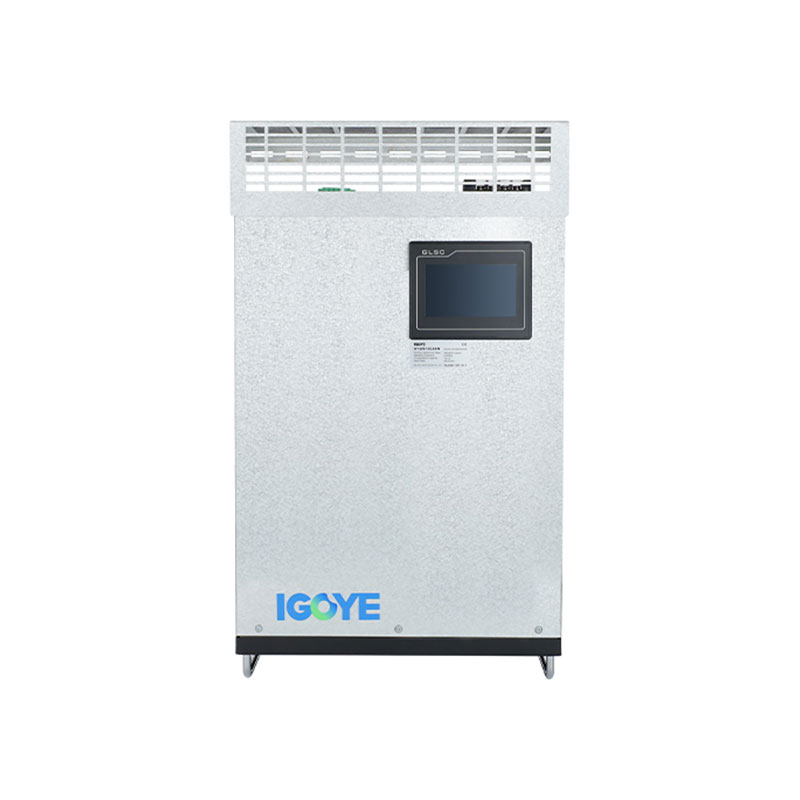How Does an Active Harmonic Filter Improve Power Quality and Efficiency?
2025-10-31
In today’s industrial and commercial electrical environments, harmonics in power systems have become a significant challenge, affecting equipment performance, energy efficiency, and overall system reliability. Active Harmonic Filters (AHFs) have emerged as advanced solutions designed to mitigate these issues.
What is an Active Harmonic Filter and Why is it Necessary?
An Active Harmonic Filter is an advanced electronic device used to eliminate unwanted harmonics from electrical systems. Unlike passive filters that rely on fixed inductors and capacitors, AHFs actively monitor the current and inject compensating currents to cancel harmonics dynamically. This ensures a clean, stable power supply, improving the performance and lifespan of connected equipment.
Key Advantages of Active Harmonic Filters:
-
Dynamic Compensation: Adjusts in real-time to changes in load and harmonic distortion.
-
Improved Energy Efficiency: Reduces losses caused by harmonic currents in transformers, cables, and motors.
-
Equipment Protection: Prevents overheating, malfunctions, and premature wear of sensitive devices.
-
Compliance with Standards: Helps meet IEEE-519 and IEC-61000-3-2 regulations for harmonic distortion.
Typical Applications:
Active Harmonic Filters are widely used in:
-
Industrial manufacturing plants with variable frequency drives (VFDs).
-
Commercial buildings with large IT or lighting systems.
-
Renewable energy installations where grid stability is critical.
-
Data centers and hospitals requiring uninterrupted power quality.
Product Parameters Table:
| Parameter | Specification |
|---|---|
| Rated Voltage | 380V / 400V / 480V AC |
| Rated Current | 20A – 200A |
| Compensation Range | Up to 95% of harmonic content |
| Response Time | <10 ms |
| Harmonic Detection Capability | Up to 50th order |
| Operating Frequency | 50/60 Hz |
| Efficiency | ≥98% |
| Protection Features | Overcurrent, Overvoltage, Short Circuit |
| Installation Type | Wall-mounted or cabinet type |
How Does an Active Harmonic Filter Work?
Active Harmonic Filters operate based on real-time detection and compensation of harmonics in an electrical system. Their functionality involves several technical processes:
-
Monitoring: The AHF continuously measures current and voltage waveforms using high-speed sensors.
-
Analysis: Advanced digital signal processing (DSP) algorithms analyze the harmonic content, identifying which frequencies need correction.
-
Injection: The device generates compensating currents of the same magnitude but opposite phase to cancel harmonics.
-
Feedback Control: A closed-loop system ensures continuous adjustment to maintain optimal power quality.
This real-time approach allows AHFs to address both static and dynamic harmonic disturbances, unlike traditional passive solutions that only provide fixed compensation.
Why Active Harmonic Filters Outperform Passive Filters:
-
Passive filters cannot adapt to changing load conditions.
-
AHFs can target multiple harmonic orders simultaneously.
-
Real-time operation prevents resonance issues common with passive filters.
-
AHFs reduce the total harmonic distortion (THD) more efficiently, often achieving THD < 5%.
Why Are Active Harmonic Filters the Future of Power Quality Management?
With growing industrial automation, increasing use of renewable energy, and stricter regulatory requirements, maintaining high-quality power has become more critical than ever. Active Harmonic Filters are increasingly seen as essential tools for the following reasons:
-
Adaptability to Smart Grids: AHFs integrate seamlessly with modern smart grid technologies, supporting real-time monitoring and remote management.
-
Scalability for Large Systems: They can be deployed in modular configurations, suitable for large industrial complexes.
-
Reduced Maintenance Costs: Dynamic compensation reduces the stress on transformers, cables, and motors, extending their lifespan.
-
Environmental Benefits: By improving energy efficiency and reducing losses, AHFs contribute to lower carbon footprints in industrial operations.
Common Questions About Active Harmonic Filters
Q1: Can an Active Harmonic Filter handle all types of loads?
A1: AHFs are designed to compensate for both linear and nonlinear loads, including variable frequency drives, UPS systems, and LED lighting. However, extremely high-power transient loads may require specialized configurations or supplementary passive elements to achieve optimal performance.
Q2: How does the installation of an AHF affect overall system efficiency?
A2: By reducing harmonic currents, AHFs lower the I²R losses in transformers, cables, and motors, improving overall system efficiency. Typically, energy savings of 2–5% can be expected in industrial systems with significant nonlinear loads. Additionally, they prevent overheating and extend the operational life of equipment.
Future Trends and Technological Innovations
Active Harmonic Filters continue to evolve with advancements in power electronics and digital control technologies. Key trends include:
-
Integration with IoT and Predictive Maintenance: Modern AHFs can transmit real-time data to cloud platforms, allowing predictive analysis of power quality issues before they escalate.
-
Wide-Range Harmonic Compensation: Future devices will handle higher-order harmonics beyond the 50th order, accommodating increasingly complex industrial loads.
-
Compact, Modular Designs: Space-saving designs make it easier to retrofit existing installations without major electrical system modifications.
-
Improved Energy Recovery Capabilities: Some AHFs are being developed to not only filter harmonics but also recycle reactive power, contributing to energy efficiency.
As a trusted brand, GEYA provides state-of-the-art Active Harmonic Filters engineered for high performance, reliability, and ease of integration into modern industrial systems. With a focus on energy efficiency, compliance with international standards, and smart grid compatibility, GEYA AHFs help businesses optimize power quality and reduce operational risks. For detailed product inquiries or customized solutions, contact us directly to explore how GEYA Active Harmonic Filters can enhance your electrical systems.



